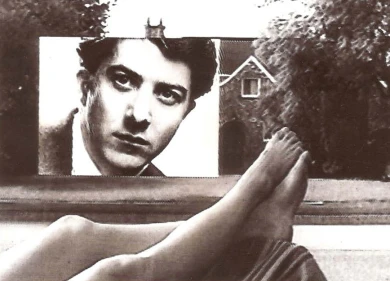Primera generación. Arte e imagen en movimiento (1963-1986)
This exhibition focuses on the work of the first generation of video-artists, through videos belonging to the Collection along with a small group of works on loan, structured around the different approaches and ideas of the artists. They are inspired by Fluxus, criticism of commercial television, the relationship between the media and the viewer, Feminism, Performance and the legacy of Minimalism and Conceptual Art.
An important group of works by women artists on the international scene is present in the exhibition. During this period of artistic research and political explosion, they contribute significantly to the development of video as an artistic language and produce a number of works full of coherence. It is in this environment where they find their own voice against discriminatory policies inside and outside the art world. The exhibition includes works on topics ranging from perception to performance, whose references are very different: painting, film and minimalism. Along with Fluxus documentaries there is a group of pioneering work exhibited by Wolf Vostell, Nam June Paik, Whitman and Takahiko Iimura's work, which uses closed circuit video that he invented to explore the idea of feedback.
Another group of works are related to television as a physical and immaterial body: information, manipulation, time and light. The critical attitude toward television and the media industry, and the manipulation of television information as a strategy to question perception, are represented by Spanish artists such as Antoni Muntadas (to whom the Museum dedicated the 1988 individual exhibition) or Eugènia Balcells (who also had an individual exhibition at the Museo Reina Sofía in 1995), which subjects television images to processes of abstraction and manipulation in order to expose culturally coded notions.
Artists
Organised by
Museo Nacional Centro de Arte Reina Sofía
Image gallery




